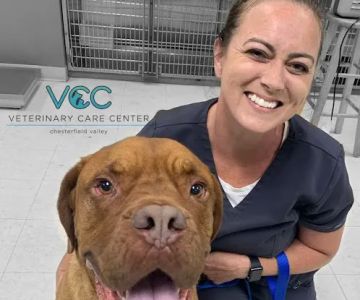A Textbook on Veterinary Surgery and Radiology: Essential Knowledge for Veterinary Professionals
Veterinary surgery and radiology are two crucial fields within veterinary medicine that play an integral role in diagnosing and treating animals. For veterinary professionals, understanding the nuances of these areas is essential for delivering the best care to their patients. One of the most comprehensive resources for acquiring this knowledge is a textbook on veterinary surgery and radiology. Whether you're a student or a practicing veterinarian, such textbooks serve as an invaluable guide to the latest techniques, procedures, and diagnostic tools.
1. The Importance of Veterinary Surgery and Radiology
Veterinary surgery and radiology are indispensable aspects of animal care. Surgery involves the treatment of a wide range of conditions, from routine spays and neuters to more complex surgeries such as tumor removals or orthopedic procedures. Radiology, on the other hand, provides veterinarians with the ability to diagnose internal issues that may not be visible externally, such as broken bones, heart problems, or tumors. A good textbook will not only cover the techniques and procedures involved in surgery and radiology but also provide insights into how these fields complement each other in the veterinary profession.

16830 Chesterfield Airport Rd, Chesterfield, MO 63005, USA
See Details2. What to Expect in a Veterinary Surgery and Radiology Textbook
A comprehensive veterinary surgery and radiology textbook typically covers a variety of essential topics. These books are designed to provide a structured approach to understanding both the theoretical and practical aspects of the subject. Here's what you can expect to find:
- Detailed Surgical Procedures: Textbooks will outline common and advanced surgical procedures in veterinary practice, offering step-by-step instructions, surgical techniques, and potential complications.
- Radiology Imaging Techniques: In-depth coverage of imaging technologies such as X-rays, ultrasounds, and CT scans, along with guidance on how to interpret these images effectively to diagnose diseases.
- Case Studies and Examples: Real-world case studies that demonstrate how veterinary surgery and radiology techniques are applied in clinical practice. These examples help students and professionals relate the theory to practical scenarios.
- Ethical and Legal Considerations: Discussion on the ethical issues veterinarians may face when performing surgeries or interpreting radiological results, and how to handle them appropriately.
3. Key Features of the Best Textbooks on Veterinary Surgery and Radiology
When looking for a textbook on veterinary surgery and radiology, it’s important to focus on the quality and comprehensiveness of the content. Here are some features that make a textbook stand out:
- Updated Information: The veterinary field is constantly evolving, especially with advancements in technology and surgical methods. A good textbook should include the most current techniques, equipment, and guidelines.
- Comprehensive Visuals: High-quality images, diagrams, and illustrations are essential in a textbook. They help students and practitioners visualize procedures, techniques, and diagnostic results.
- Clear Language and Structure: A textbook should use clear and precise language, making complex procedures and technical terms accessible to both students and practicing veterinarians.
- Expert Contributions: Textbooks authored or edited by leading experts in veterinary surgery and radiology offer authoritative knowledge, ensuring that the material is both reliable and insightful.
4. Recommended Textbooks for Veterinary Surgery and Radiology
There are many excellent textbooks available that cover veterinary surgery and radiology. Here are some of the top choices for those looking to deepen their knowledge in these critical areas:
- "Veterinary Surgery: Small Animal" by M. J. Tobias and S. L. Johnston: This book is a comprehensive guide to small animal surgery, covering everything from basic techniques to advanced procedures. It’s known for its clear writing and detailed illustrations, making it ideal for veterinary students and professionals.
- "Textbook of Veterinary Diagnostic Radiology" by Donald E. Thrall: A leading text in the field of veterinary radiology, this book provides in-depth coverage of diagnostic imaging, including X-rays, CT scans, and MRIs. It also includes detailed case studies and guidance on interpreting images effectively.
- "Veterinary Surgery: Essentials of Small Animal Surgery" by D. S. Lamb and R. D. Nicklin: This textbook offers a thorough exploration of surgical procedures for small animals, focusing on techniques and clinical practices that can be applied in veterinary surgery today.
5. How Veterinary Surgery and Radiology Impact Animal Health
The integration of veterinary surgery and radiology significantly enhances the quality of care veterinarians can provide. Surgery allows for the direct treatment of physical conditions, while radiology provides crucial diagnostic information that can guide surgical decisions. Together, these two fields play a pivotal role in diagnosing and treating a wide variety of animal health problems, ranging from traumatic injuries to complex medical conditions like cancers or heart disease.
For example, a veterinarian might use radiology to identify a fractured bone or internal bleeding, and then perform surgery to repair the damage. Alternatively, radiology may reveal signs of an internal issue such as a tumor, prompting a more in-depth investigation and potentially saving the animal’s life. By understanding both fields, veterinary professionals are better equipped to provide the most comprehensive care possible.
6. The Future of Veterinary Surgery and Radiology
The future of veterinary surgery and radiology is bright, with continued advancements in technology and surgical techniques. New imaging technologies, such as high-definition CT scans and 3D imaging, allow for even more precise diagnostics. Robotic surgery is also beginning to make an impact, offering higher precision and quicker recovery times for animals.
As these fields evolve, it’s essential for veterinarians to stay updated with the latest knowledge and techniques. A textbook on veterinary surgery and radiology serves as an invaluable resource for continuing education, allowing veterinarians to provide the highest standard of care to their animal patients.
SEO Title: Best Textbooks for Veterinary Surgery and Radiology: Essential Resources SEO Keywords: veterinary surgery, veterinary radiology, textbooks for veterinarians, surgery and radiology books SEO Description: Discover the best textbooks on veterinary surgery and radiology for veterinarians. Learn about essential surgical techniques, diagnostic imaging, and more.









